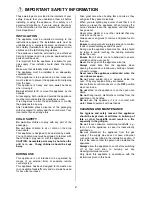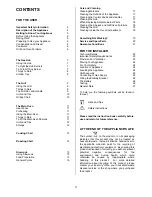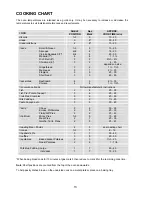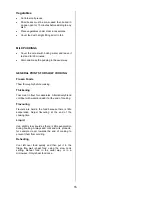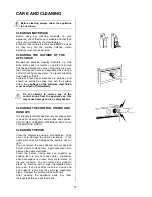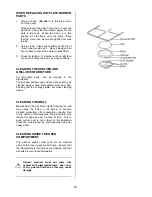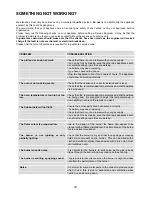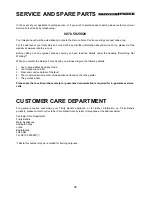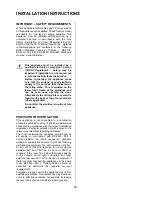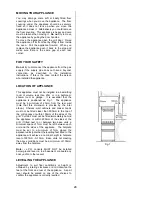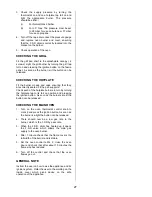
12
HINTS AND TIPS
•
Arrange the shelves in the required positions
before switching the oven on. Shelf positions are
counted from the top downwards.
•
Ensure that food is placed centrally on the shelf
and there is sufficient room around the baking
tray/dish to allow for maximum circulation.
•
Do not push dishes too far back as food will burn
if it overhangs the burner flame.
•
Stand dishes on a suitably sized baking tray on
the shelf to prevent spillage onto the oven base
and to help reduce cleaning.
•
The material and finish of the baking tray and
dishes used affect base browning. Enamelware,
dark, heavy or non- stick utensils increase base
browning. Shiny aluminum or polished steel
trays reflect the heat away and give less base
browning.
•
When cooking more than one dish in the oven,
place dishes centrally on different shelves rather
than cluster several dishes on one shelf, this will
allow the heat to circulate freely for the best
cooking results.
•
If you are cooking more than one tray of similar
items, for example cakes or biscuits, swap the
trays during cooking or you can remove the top
tray when the food is cooked and move the
lower tray to the higher shelf to finish cooking.
•
Do not
place baking trays directly on the oven
base as it interferes with the oven air circulation
and can lead to base burning; use the lower
shelf position.
Do not place cookware and cooking pots
with rough bases e.g. cast iron on the oven
door as damage to the glass may occur.
STORAGE
The compartment below the oven is useful for
storing baking trays, cake tins and so on.
Do not
store anything in this compartment which may catch
fire.


